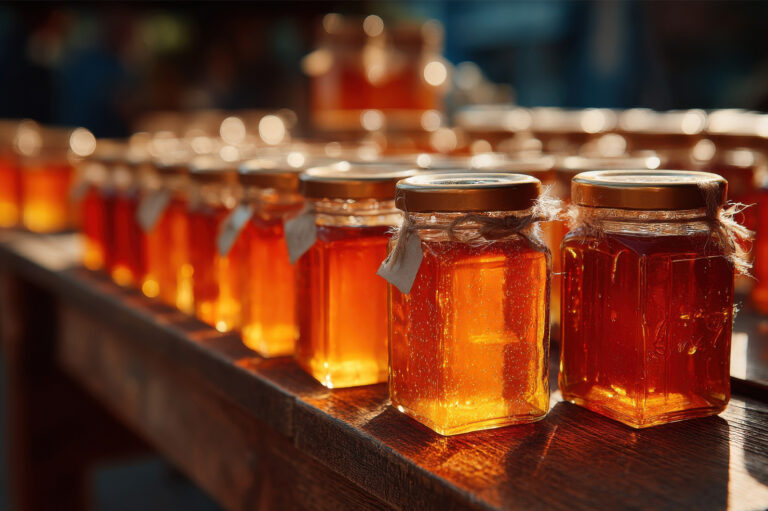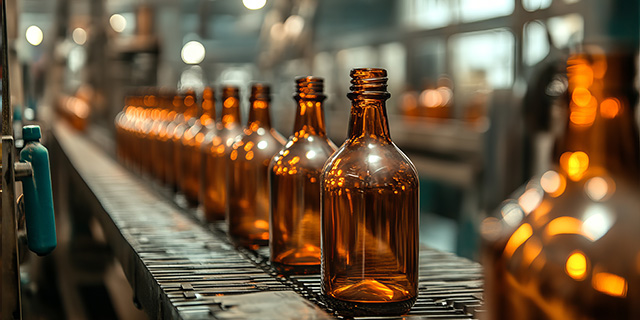The Extended Producer Responsibility (EPR), which will affect larger organisations handling packaging from October 1, 2025, based on the type and recyclability of the materials, represents the most significant cost change facing food producers who use glass packaging. Understanding what this means for your business and implementing the right solutions can turn this challenge into a competitive advantage.
What EPR Means for Your Glass Packaging Costs
If your business has a turnover over £2 million and handles more than 50 tonnes of packaging annually, you’ll be directly responsible for paying the full costs of collecting, sorting, and recycling your glass containers. This shifts costs that were previously covered by local authorities directly onto your business.
The financial impact on your glass packaging: Because EPR fees are calculated by weight, glass packaging faces significantly higher costs than lighter alternatives like plastic or aluminium. This weight-based system means your glass jars, bottles, and containers will attract much higher fees per unit than competing packaging materials.
Immediate implications for your business:
- Your packaging costs will increase substantially from October 2025
- Glass containers will be disproportionately affected due to their weight
- You’ll need to factor these costs into your product pricing and profit margins
- The heavier your glass packaging, the more you’ll pay in EPR fees
Understanding the Cost Impact
The EPR fees create specific cost impacts that require careful planning:
- Base EPR fee for glass: £192 per tonne
- Product-level impact: 4p to 10p per individual bottle, £1.00 for an 18-pack of beer
Starting in 2026, fees might be “modulated” based on recyclability, meaning fees might be reduced for packaging which can be fully recycled from kerbside collection. This system uses the Recyclability Assessment Methodology (RAM), which assigns a Red, Amber, or Green classification to packaging that directly impacts EPR fees.
RAM Classification for Glass:
- Green: Clear (flint), green, blue, and amber (brown) glass containers qualify for reduced fees – this covers most standard food packaging glass
- Amber: Very limited – mainly glass that relies on take-back schemes rather than standard local authority collection
- Red: Any other glass colours not widely collected, or glass with designed-in contamination (such as nail polish bottles)
- Fee Structure: In 2026, Red-rated packaging will pay 20% higher fees than base rates, increasing to double the base fee by 2028. Green-rated packaging receives discounted fees.
This creates clear financial incentives to use standard glass colours (clear, green, blue, amber) which all qualify for the best Green rating and reduced EPR fees.
Practical Solutions to Manage EPR Costs
Rather than accepting these costs as unavoidable, successful food producers are implementing solutions that can reduce or offset EPR impacts:
Bulk Purchasing Power
One of the most effective ways to offset EPR costs is through volume purchasing. Buying glass containers in larger quantities delivers significant per-unit savings that can absorb regulatory cost increases. Our online shop Jars & Bottles offers wholesale glass packaging with substantial cost reductions through volume purchasing. We provide transparent pricing on bulk orders, making it easy to calculate how volume discounts can offset EPR increases.
Lightweight Glass Innovation
Modern lightweight glass containers deliver the same premium appeal and sustainability benefits while reducing both EPR fees (which are weight-based) and transport costs. Lightweight glass technology can reduce container weight by 15-30% without compromising strength or appearance, directly cutting EPR liability while maintaining premium positioning.
Premium Product Strategy
Focus glass packaging on high-value product lines where consumers expect sustainable packaging and will pay for quality. This approach maximises glass’s benefits while minimising cost impact, allowing you to pass through EPR costs more easily on premium products.
Turning EPR Costs into Brand Advantages
Position your use of glass packaging as environmental leadership. Glass’s infinite recyclability creates a powerful differentiator that resonates with consumers willing to pay premium prices for sustainable products. Glass’s chemical inertness preserves taste and quality better than alternatives, justifying premium positioning that can offset EPR costs.
Key messaging opportunities:
- Highlight glass’s infinite recyclability without quality degradation
- Emphasise taste and quality preservation benefits
- Position EPR compliance as environmental responsibility
- Use sustainability credentials to justify premium pricing
Executive Summary
EPR represents a substantial regulatory cost increase for food producers utilising glass packaging, but simultaneously creates significant opportunities for market differentiation and premium brand positioning. The total costs for all UK organisations are expected to be around £1.7 billion per year under the new EPR system, compared to the previous PRN system which cost £200-300 million annually. Companies that successfully implement comprehensive strategies encompassing volume purchasing, lightweight glass technology, and premium brand positioning can transform EPR costs from a financial burden into a sustainable competitive advantage.
Key success metrics: Industry analysis suggests that food producers implementing comprehensive EPR management strategies can offset 60-80% of additional costs through combined approaches including bulk purchasing (15-25% cost reduction), lightweight glass adoption (15-30% weight reduction), and premium positioning strategies.
The critical success factor lies in proactive implementation of these solutions before October 2025, when EPR cost obligations commence. Organisations that invest in thorough preparation and strategic positioning will establish stronger market positions and improved resilience in the evolving regulatory landscape.
Sources
- UK Government – Packaging Extended Producer Responsibility Fee Modulation (2025)
- UK Government – Recyclability Assessment Methodology: Assessing Materials (December 2024)
- Circular Online – UK Glass Industry Raises Concerns Over New Packaging Regulations Impact (December 2024)
- British Glass – Industry Reports and Press Releases (2024-2025)


